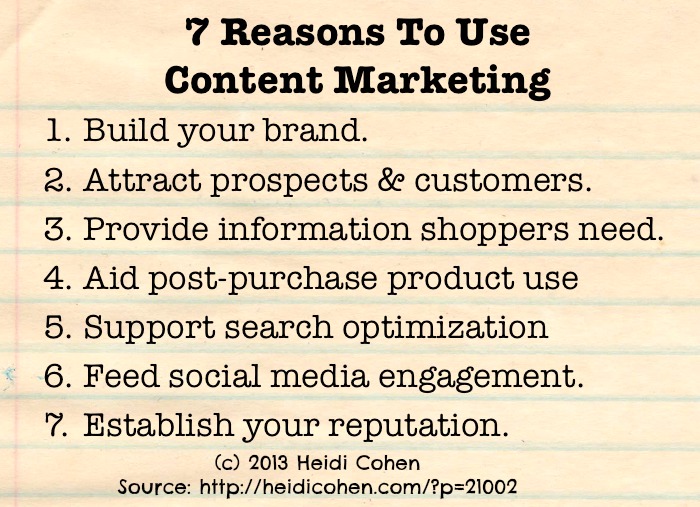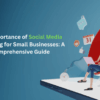5 reasons to love your content marketing plan: This isn’t just another marketing strategy; it’s a powerful engine driving your business forward. From defining success to adapting to change, a well-crafted plan fuels growth, engagement, and conversions. This post dives deep into why you should embrace and love your content marketing strategy.
We’ll explore how a well-defined content marketing plan attracts and retains your ideal customers, drives conversions, and builds long-term value. Understanding the metrics and strategies behind a successful plan will equip you to create content that truly resonates with your audience, ultimately boosting your business.
Defining Content Marketing Success

A successful content marketing plan is more than just creating engaging content; it’s about aligning that content with specific business objectives and measurable outcomes. It’s a strategic approach that attracts, engages, and converts target audiences, ultimately driving profitable customer action. A well-executed plan focuses on providing value to the audience, establishing thought leadership, and nurturing relationships that lead to long-term customer loyalty.Content marketing success isn’t a one-size-fits-all endeavor.
It hinges on understanding your target audience, defining clear goals, and consistently producing high-quality content that resonates with their needs and interests. The metrics used to measure success vary based on these objectives, but ultimately, quantifiable results are crucial for demonstrating ROI.
Defining Success Metrics
Successful content marketing is measurable. A comprehensive approach involves tracking key performance indicators (KPIs) to gauge the effectiveness of your strategies. These metrics offer valuable insights into audience engagement, brand awareness, and conversion rates. Tracking website traffic, social media engagement, lead generation, and conversion rates provides a holistic view of your content marketing’s performance. Monitoring these metrics helps you adjust your strategy and optimize content for maximum impact.
- Website Traffic: This includes the number of visitors to your website, the pages they visit, and how long they stay. High website traffic suggests your content is attracting your target audience. This data can be analyzed using tools like Google Analytics.
- Social Media Engagement: This encompasses likes, shares, comments, and retweets. High engagement indicates that your content is resonating with your audience and sparking conversations. Tools like Hootsuite and SproutSocial can help monitor this.
- Lead Generation: This refers to the number of leads generated through your content, such as email sign-ups, contact form submissions, and webinar registrations. A strong lead generation rate indicates that your content is effectively capturing potential customers’ interest.
- Conversion Rates: This is the percentage of visitors who complete a desired action, such as making a purchase, filling out a form, or signing up for a newsletter. High conversion rates show that your content is persuasive and compelling enough to drive conversions.
Content Types for a Successful Plan
The diverse range of content formats available provides a rich tapestry for effective content marketing. From blog posts to videos, each format has its strengths and weaknesses in achieving specific marketing goals. The key is to choose the content types that best align with your target audience’s preferences and your overall marketing objectives.
- Blog Posts: In-depth articles that address specific topics and offer valuable information to your audience. Blog posts are ideal for establishing thought leadership and providing detailed explanations of products or services.
- Infographics: Visual representations of data or information, designed to quickly communicate complex concepts. Infographics are excellent for presenting statistics or data in an engaging and easily digestible format.
- Videos: Dynamic presentations that use visuals, audio, and sometimes animation to communicate messages and connect with audiences. Videos can be incredibly effective for demonstrating products, explaining processes, or providing tutorials.
- Case Studies: Detailed accounts of how your company has helped clients achieve specific results. Case studies build trust and credibility by showcasing tangible outcomes and proving the value of your products or services.
Comparing Content Formats
The optimal content format depends heavily on your goals and target audience. This table provides a concise overview of the strengths and weaknesses of different formats in achieving specific marketing objectives.
| Content Format | Strengths | Weaknesses | Marketing Goals |
|---|---|---|---|
| Blog Posts | Detailed information, optimization potential, establishes thought leadership | Time-consuming to create, may not be as visually engaging | Brand awareness, lead generation, thought leadership |
| Infographics | Visually appealing, easily shareable, quick consumption of information | Limited space for detailed explanations, less suitable for complex topics | Brand awareness, social media engagement, data visualization |
| Videos | Highly engaging, visually appealing, great for demonstrating products or processes | Can be expensive to produce, require technical expertise | Brand awareness, product demonstrations, customer education |
| Case Studies | Builds credibility, demonstrates value, persuasive | Time-consuming to research and write, may not appeal to all audiences | Lead generation, customer acquisition, social proof |
Attracting and Engaging Your Audience
A well-structured content marketing plan is more than just creating content; it’s about building a bridge between your brand and your target audience. Effective content attracts, engages, and ultimately retains a loyal following. This requires understanding your audience’s needs, preferences, and pain points, and crafting content that resonates with them on a deeper level.A strong content marketing plan ensures that the content you create aligns with your audience’s interests and search queries.
This targeted approach not only drives traffic but also cultivates a community around your brand. By consistently delivering valuable and engaging content, you establish yourself as a trusted authority in your field, fostering long-term relationships with your audience.
Strategies for Resonating Content
Creating content that truly resonates with your target audience requires a deep understanding of their needs and preferences. Research and analysis are crucial for identifying the topics, formats, and styles that will capture their attention and encourage engagement. Analyzing competitor content and industry trends can provide valuable insights into what’s working and what’s not. This data-driven approach allows for the development of targeted content strategies that are optimized for specific audience segments.
- Understanding audience demographics and psychographics is vital for crafting content that aligns with their values and interests. For example, a B2B company targeting CEOs might focus on content related to industry trends and leadership strategies, while a B2C company selling beauty products might prioritize content that emphasizes self-care and personal style.
- Tailoring content formats to specific audience preferences is key. Some audiences prefer short-form videos, while others prefer in-depth articles or infographics. Consider the various formats available, from blog posts and social media updates to webinars and podcasts, to ensure your content reaches the widest possible audience.
- Using compelling storytelling to connect with your audience on an emotional level can significantly enhance engagement. Stories are relatable and memorable, helping to establish a deeper connection with your brand.
Methods for Building Relationships
Building relationships with your audience through engaging content involves fostering a sense of community and trust. Regular interaction with your audience through comments, direct messages, and social media engagement demonstrates genuine interest and encourages two-way communication. Creating a space where your audience feels heard and valued is essential for fostering long-term loyalty.
- Prompting interaction through questions, polls, and surveys encourages audience participation and creates a sense of community. This direct engagement builds stronger relationships and provides valuable insights into audience preferences.
- Offering exclusive content or behind-the-scenes glimpses into your brand builds a sense of exclusivity and strengthens the bond between your brand and its audience. This could include exclusive content for subscribers or early access to new products or services.
- Responding promptly and thoughtfully to comments and feedback shows that you value your audience’s input and strengthens your reputation as a responsive and reliable brand.
Audience Engagement Strategies and Impact
A well-defined content marketing plan considers audience engagement strategies and their potential impact on brand loyalty. The following table Artikels various strategies and their likely effects:
| Engagement Strategy | Potential Impact on Brand Loyalty |
|---|---|
| Interactive content (quizzes, polls, Q&A sessions) | Increased audience participation and brand awareness; fosters a sense of community. |
| Regular social media engagement (responding to comments, running contests) | Builds stronger relationships and improves brand perception as responsive and approachable. |
| Creating exclusive content for subscribers | Increases engagement and fosters a sense of loyalty and exclusivity among subscribers. |
| Offering personalized recommendations based on audience data | Enhances user experience, demonstrates understanding, and drives higher conversion rates. |
| Running contests and giveaways | Drives engagement, generates excitement, and promotes brand awareness. |
Driving Action and Conversions

Content marketing isn’t just about creating engaging content; it’s about using that content to achieve specific business goals. A well-structured content marketing plan clearly Artikels how content will drive desired actions, such as lead generation, sales, and brand awareness. This crucial aspect focuses on guiding potential customers through the sales funnel, optimizing content for conversions, and encouraging engagement with compelling calls to action.A key component of a successful content marketing plan is the ability to transform website visitors into customers.
This requires careful consideration of the entire customer journey and tailoring content to each stage. By understanding the customer’s needs and pain points, businesses can create content that addresses those issues, builds trust, and ultimately drives conversions.
Optimizing Content for Conversions
Content optimization for conversions involves tailoring content to address the needs and pain points of the target audience at each stage of the sales funnel. This requires a deep understanding of customer behavior and the use of relevant s and calls to action. The content should not only inform but also persuade and motivate the reader towards the desired action.
Loving your content marketing plan? It’s awesome! But to really make it shine, you need to develop some killer differentiators. That’s where research comes in. Learning how to use research effectively to find those unique selling points, like in developing differentiators how research can help you pass the test , will give your plan an edge.
Ultimately, though, these differentiators are just another reason to love your content marketing plan, even more so!
Call-to-Actions for Engagement and Conversions
Effective call-to-actions (CTAs) are critical for encouraging engagement and driving conversions. They are clear instructions that prompt the user to take a specific action, such as downloading a resource, requesting a demo, or making a purchase. The design of the CTA should be eye-catching and easy to understand, ensuring it effectively communicates the value proposition to the user.
- Clear and Concise Language: Use simple, straightforward language to communicate the value proposition of the offer. Avoid jargon or technical terms that might confuse the reader.
- Compelling Value Proposition: Highlight the benefits the user will receive by taking the action. Focus on the solution the offer provides, not just the features.
- Visual Appeal: Use visually appealing buttons or text that stand out on the page. Consider color schemes and typography to make the CTA more noticeable and engaging.
Examples of strong CTAs include phrases like “Download Your Free Guide,” “Request a Demo Today,” or “Shop Now.” These are concise, action-oriented, and clearly communicate the benefit of taking the desired action.
Content Formats and the Sales Funnel
Different content formats can be used to guide users through the sales funnel, from awareness to consideration to decision. For example, blog posts can be used to educate and inform potential customers, while case studies can demonstrate the value of a product or service.
| Stage of the Sales Funnel | Content Format | Example |
|---|---|---|
| Awareness | Blog posts, infographics, social media updates | A blog post about the benefits of using a specific software or a social media post highlighting a company’s latest product. |
| Consideration | Case studies, webinars, product demos | A detailed case study showcasing how a company helped a client solve a problem or a webinar explaining the features of a new product. |
| Decision | Product pages, pricing guides, testimonials | A well-structured product page with detailed information, pricing plans, and positive customer testimonials. |
By strategically utilizing various content formats and incorporating clear calls to action, businesses can effectively guide potential customers through the sales funnel, leading to increased conversions and ultimately, business growth.
Long-Term Value and Sustainability
A well-executed content marketing plan isn’t a one-and-done project. It’s a living, breathing entity that requires consistent nurturing and adaptation to stay relevant and effective. Understanding its long-term value is crucial for achieving sustainable growth and establishing a strong brand presence. This involves more than just creating content; it’s about building a system that delivers continuous value over time.This long-term approach fosters a strong foundation for brand authority, fosters trust with your audience, and positions your business as a thought leader in its industry.
Loving your content marketing plan? It’s awesome! Five reasons? Well, it’s not just about pretty graphics or catchy headlines; it’s about establishing yourself as a visible expert in your field. Understanding what a visible expert is what is a visible expert is key to maximizing your plan’s impact. By consistently creating valuable content, you’re building trust and authority, leading to more leads and ultimately, more success.
So, keep those creative juices flowing and enjoy the ride! Your content marketing plan is your secret weapon.
By strategically planning for content updates and repurposing, you can maximize the impact of your initial efforts and ensure ongoing engagement.
Strategies for Maintaining and Updating a Plan
Maintaining a robust content marketing plan involves proactive strategies for content refresh and adaptation. Regular audits of existing content are essential to identify opportunities for improvement and ensure its continued relevance. Content calendars play a crucial role in this process, helping to maintain a consistent output schedule.
Content Repurposing and Optimization Best Practices
Repurposing existing content is a cost-effective way to extend its reach and maximize its impact. For example, a blog post can be transformed into social media updates, infographics, or even a short video. By repurposing existing content, you can reach new audiences and keep your brand top-of-mind.
- Content Audits: Regularly assessing existing content helps determine its effectiveness and identify opportunities for improvement. This includes analyzing content performance metrics (e.g., views, shares, engagement) and audience feedback. A comprehensive content audit ensures that your content remains relevant and valuable.
- Content Calendar Management: Developing and adhering to a detailed content calendar ensures consistent content creation and publication. This helps maintain a steady flow of fresh, engaging content, keeping your audience engaged and your brand visible. This calendar should incorporate various content formats, such as blog posts, videos, infographics, and social media updates, to cater to diverse audience preferences.
- Repurposing Strategies: Transforming existing content into different formats expands its reach and lifespan. A blog post can be condensed into a social media update, an infographic, or even a short video. This approach ensures that your content remains valuable and relevant to your audience for an extended period.
- Optimization: Regularly updating and optimizing content with relevant s and metadata ensures that it remains discoverable in search engine results. Staying current with search engine algorithm changes is crucial to maintain visibility and attract organic traffic.
Examples of Building Brand Authority and Trust
Consistent content creation builds brand authority and trust by showcasing expertise and thought leadership. When you consistently provide valuable insights and information, your audience begins to see you as a reliable source of knowledge in your industry. This trust is crucial for driving long-term engagement and loyalty. For example, a company known for publishing insightful articles on industry trends and best practices will be viewed as an authoritative source, earning the trust of its audience.
Content Optimization for Longevity
A significant factor in achieving long-term value from content is optimization for longevity. This means creating content that is evergreen—relevant and valuable for a prolonged period—rather than focusing on fleeting trends. This approach ensures that your content continues to attract readers and generate leads over time.
- Evergreen Content: Focus on creating content that addresses timeless topics, not just current events. This approach ensures that your content remains relevant and valuable for a longer period, and is a fundamental aspect of building lasting brand authority.
- Content Updates: Maintaining the freshness of content is crucial. Continuously updating existing content with new information, data, and insights keeps it relevant to the current audience’s needs.
Adaptability and Growth: 5 Reasons To Love Your Content Marketing Plan
Content marketing isn’t a static exercise; it’s a dynamic process that requires constant adaptation to changing trends and evolving consumer preferences. A successful content marketing plan must be flexible enough to adjust to market shifts, emerging technologies, and evolving audience expectations. Ignoring these changes can quickly lead to a decline in engagement and effectiveness.Staying ahead of the curve in content marketing requires more than just reacting to changes; it demands proactive observation and a willingness to experiment with new strategies.
Continuous improvement, informed by performance data, is crucial for long-term success. This adaptability ensures that your content marketing efforts remain relevant and effective in the ever-shifting digital landscape.
Importance of Adapting to Evolving Trends
Understanding and responding to evolving trends is paramount for maintaining a competitive edge. Changes in consumer behavior, technological advancements, and shifting market dynamics necessitate adjustments to content strategies. For example, the rise of short-form video content has prompted many businesses to incorporate video into their content mix, even if they previously focused primarily on written content. Failure to adapt to these trends can lead to a significant drop in reach and impact.
Key Strategies for Staying Ahead of the Curve
Proactive monitoring of industry trends and competitor strategies is essential. Staying informed about emerging platforms, technologies, and content formats allows businesses to identify opportunities and adjust their strategies accordingly. This proactive approach involves consistently researching new platforms and formats, such as the use of AI tools for content creation or interactive content formats like quizzes and polls. Continuously analyzing competitor strategies helps businesses identify gaps and areas for improvement.
Staying informed about algorithm changes on major platforms is also crucial.
Continuous Improvement Based on Performance Data
Regularly evaluating content performance is critical for identifying areas for improvement. Key performance indicators (KPIs) such as website traffic, engagement metrics, lead generation, and conversion rates should be closely tracked and analyzed. By monitoring these metrics, businesses can gain valuable insights into what resonates with their audience and what doesn’t. This data-driven approach informs strategic decisions, allowing for targeted adjustments to content themes, formats, and distribution channels.
Using analytics tools effectively is crucial for identifying patterns and making informed decisions.
Comparing Content Marketing Strategies
| Strategy | Potential for Growth | Description |
|---|---|---|
| Blog posts | High | In-depth articles covering specific topics. Can attract a broad audience and establish expertise. |
| Social media updates | Medium-High | Short-form content designed for rapid engagement. Excellent for building a community. |
| Infographics | High | Visually appealing representations of data and information. Excellent for sharing complex information concisely. |
| Videos | Very High | Engaging visual content that can capture attention and drive engagement. Especially effective for tutorials, product demonstrations, and storytelling. |
| Podcasts | Medium | Audio content that can be consumed on the go. Suitable for reaching audiences interested in longer-form content. |
This table provides a general overview of various content marketing strategies and their potential for growth. The “Potential for Growth” column is a general assessment, and specific results can vary based on factors such as audience, niche, and execution quality. Adaptability and continuous optimization are key for achieving the best possible results from any content strategy.
Content Examples for Different Industries
Content marketing strategies need to be tailored to the specific needs and characteristics of each industry. Understanding the nuances of different sectors allows for more effective communication and engagement with target audiences. This section will explore how content strategies adapt to various industries, highlighting examples of successful content formats and distribution methods.
Technology Industry
The technology industry thrives on innovation and staying ahead of the curve. Content marketing in this sector focuses on showcasing technological advancements, explaining complex concepts in accessible ways, and building thought leadership. A tech company might publish detailed blog posts about new hardware releases, create in-depth video tutorials demonstrating software features, or host webinars featuring experts discussing emerging trends.
Loving your content marketing plan? It’s awesome! Five reasons to celebrate your strategy include its ability to attract a targeted audience, build brand authority, and boost SEO. But, remembering that great content needs a platform that’s easy to navigate is also key to success. A fantastic user experience, like the one detailed in this guide on why is user experience important in website design , will help your audience find and engage with your valuable content, which ultimately fuels those five reasons to love your plan even more.
The format often includes interactive elements like polls, quizzes, and downloadable resources.
Healthcare Industry
Content in the healthcare industry must be highly informative, credible, and patient-centric. Medical professionals and healthcare organizations often publish educational articles about health conditions, treatment options, and preventive measures. They use infographics and videos to simplify complex medical information. Furthermore, they leverage webinars and online forums to facilitate communication and answer patient questions. Content is carefully vetted by medical experts to ensure accuracy and compliance with industry regulations.
Finance Industry
The finance industry requires content that is both informative and trustworthy. Financial institutions often create educational materials on investment strategies, financial planning, and market trends. They use infographics and interactive tools to visualize complex financial data. Content marketing in finance relies heavily on building trust and credibility through transparent communication and expert insights.
Specific Content Examples
- Technology: A blog post explaining the technical specifications of a new smartphone model, along with a video demonstration of its key features. A companion infographic highlighting the device’s performance advantages against competitors could also be included.
- Healthcare: An informative article about managing stress and its impact on overall health, including tips for coping strategies. A short video featuring a medical professional answering frequently asked questions about stress management.
- Finance: A series of blog posts covering different investment strategies, such as value investing or growth investing. An interactive calculator tool for potential investors to explore different portfolio scenarios and determine their optimal investment strategies.
Content Formats and Distribution
Different industries leverage diverse content formats to cater to specific audience needs and preferences. The choice of format often depends on the complexity of the topic and the desired level of engagement.
- Blog posts: Ideal for in-depth explanations, thought leadership, and detailed information. Suitable for topics requiring a detailed explanation, like explaining a new technology or providing comprehensive financial advice.
- Videos: Effective for demonstrating products, showcasing expertise, and conveying information visually. Useful for explaining technical concepts or demonstrating the practical application of new technologies.
- Infographics: Ideal for presenting complex data visually, making information easier to understand. Excellent for presenting market trends, financial data, or medical statistics.
Measuring and Tracking Progress
A crucial aspect of any successful content marketing plan is the ability to measure and track its performance. Without data-driven insights, it’s impossible to understand what’s working, what’s not, and where to focus future efforts. Effective tracking allows for continuous optimization and ensures the plan remains aligned with overall business objectives.Understanding the metrics that matter most and consistently monitoring their progress empowers marketers to adapt and refine their strategies for maximum impact.
This proactive approach allows for a dynamic, responsive strategy that keeps pace with evolving market trends and audience needs.
Methods for Measuring Content Success, 5 reasons to love your content marketing plan
Tracking content performance involves a multifaceted approach, encompassing various tools and techniques. Analyzing website traffic, engagement metrics, and conversion rates provides a comprehensive view of the plan’s effectiveness. Social media analytics and lead generation data offer further insight into audience interactions and responses to specific content pieces.
Examples of Tracking Metrics
A range of metrics provide valuable insights into the success of a content marketing strategy. Website traffic (unique visitors, page views, bounce rate), engagement metrics (time on page, social shares, comments), and conversion rates (lead generation, sales) are essential to monitor. In addition, consider tracking specific actions such as downloads, subscriptions, and email sign-ups. For instance, a blog post with a downloadable resource may see a significant increase in downloads, reflecting a high level of engagement with that particular content piece.
Tracking metrics should be tailored to the specific goals and objectives of the content marketing plan.
Analyzing Data to Identify Areas for Improvement
Regularly analyzing the collected data is crucial for identifying areas requiring improvement. Identify patterns and trends in the data to understand what resonates with the target audience and what doesn’t. Comparing different content formats, topics, and posting schedules can pinpoint what’s performing well and what could be enhanced. For example, if certain blog posts consistently generate higher engagement and conversions than others, consider replicating the successful elements in future content.
This analysis provides a foundation for informed decisions and a more effective content marketing plan.
Key Performance Indicators (KPIs) for Content Marketing
The following table Artikels key performance indicators (KPIs) for measuring content marketing success. These metrics provide a framework for tracking progress and identifying areas for improvement.
| KPI | Description | How to Measure | Example |
|---|---|---|---|
| Website Traffic | Number of visitors to the website. | Google Analytics, website traffic tools. | 10,000 unique visitors per month. |
| Engagement Rate | Measure of audience interaction with content. | Time on page, social shares, comments, likes. | Average time on page of 5 minutes. |
| Conversion Rate | Percentage of visitors who complete a desired action. | Lead generation, sales, subscriptions. | 10% conversion rate from blog to lead form. |
| Social Media Engagement | Interaction with content on social media platforms. | Likes, shares, comments, mentions. | 500 likes per post on Facebook. |
| Lead Generation | Number of leads generated through content. | Form submissions, email sign-ups. | 50 new leads per week. |
| Customer Acquisition Cost (CAC) | Cost of acquiring a new customer. | Divide total marketing costs by the number of new customers. | $100 CAC. |
Summary
In conclusion, a strong content marketing plan is more than just a collection of ideas; it’s a dynamic system that grows and adapts with your business. By understanding how to define success, attract your audience, drive action, build long-term value, and adapt to change, you’ll unlock the full potential of your content marketing. Embrace the power of your plan, and watch your business flourish.






